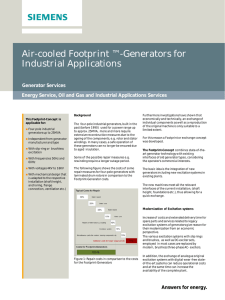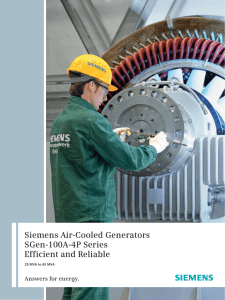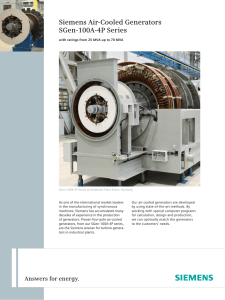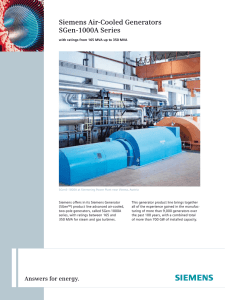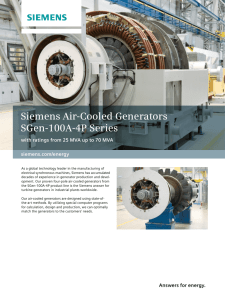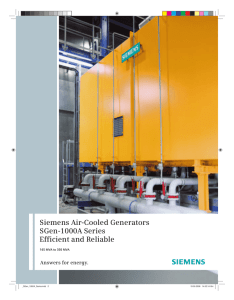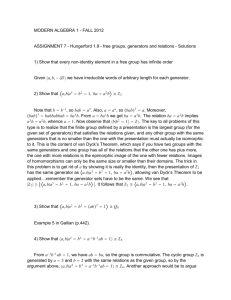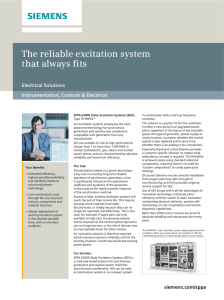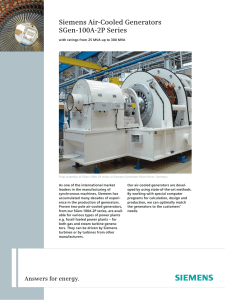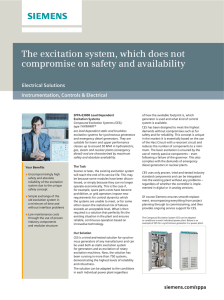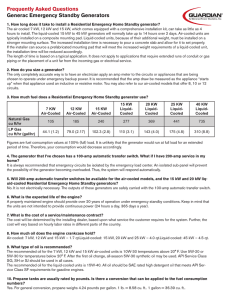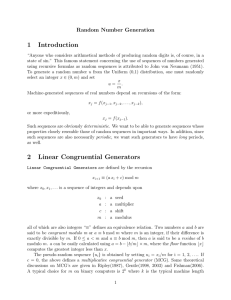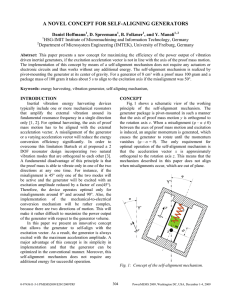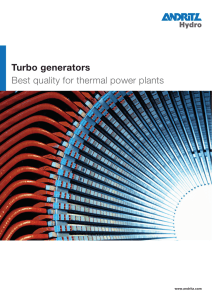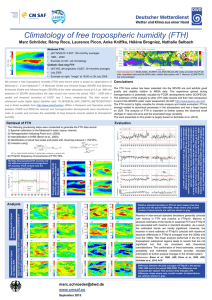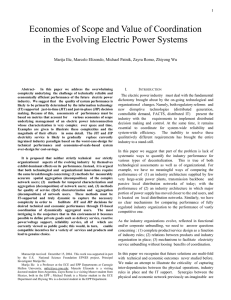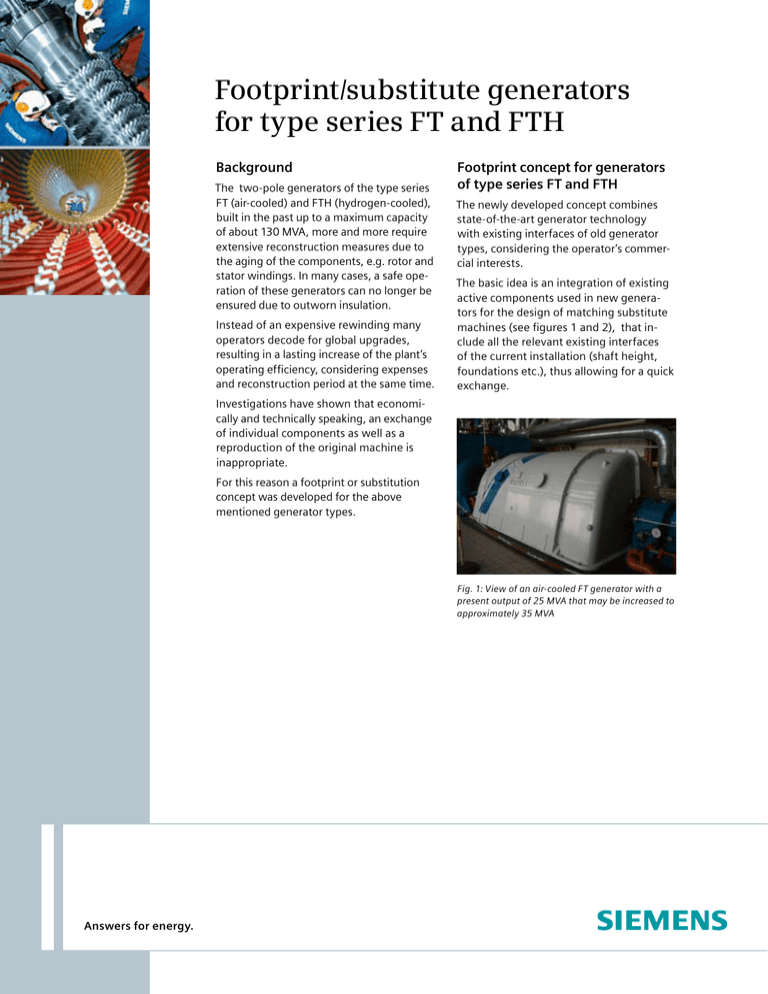
Footprint/substitute generators
for type series FT and FTH
Background
The two-pole generators of the type series
FT (air-cooled) and FTH (hydrogen-cooled),
built in the past up to a maximum capacity
of about 130 MVA, more and more require
extensive reconstruction measures due to
the aging of the components, e.g. rotor and
stator windings. In many cases, a safe operation of these generators can no longer be
ensured due to outworn insulation.
Instead of an expensive rewinding many
operators decode for global upgrades,
resulting in a lasting increase of the plant’s
operating efficiency, considering expenses
and reconstruction period at the same time.
Footprint concept for generators
of type series FT and FTH
The newly developed concept combines
state-of-the-art generator technology
with existing interfaces of old generator
types, considering the operator’s commercial interests.
The basic idea is an integration of existing
active components used in new generators for the design of matching substitute
machines (see figures 1 and 2), that include all the relevant existing interfaces
of the current installation (shaft height,
foundations etc.), thus allowing for a quick
exchange.
Investigations have shown that economically and technically speaking, an exchange
of individual components as well as a
reproduction of the original machine is
inappropriate.
For this reason a footprint or substitution
concept was developed for the above
mentioned generator types.
Fig. 1: View of an air-cooled FT generator with a
present output of 25 MVA that may be increased to
approximately 35 MVA
Answers for energy.
Fig. 2: Lateral view of a newly developed generator that is a substitute for the generator shown in fig. 1
The developed footprint concept is applicable for all the FT generators, independent
from design and cooling system, for all
established requirements:
Frequencies 50 Hz and 60 Hz
Voltages 6,3 kV /10,5 kV /13,0 kV
Hydrogen-cooled FTH generators may
optionally be replaced with new, more
efficient, air-cooled machines. Hereby, the
abolition of operational costs for hydrogen
systems effects a significant saving potential for operators.
Excitation system exchange
Increase of costs and extended delivery
time for spare parts and services connected
with legacy excitation systems of FT
generators give economic reason to their
modernization.
Published by and copyright © 2008:
Siemens AG
Energy Sector
Freyeslebenstrasse 1
91058 Erlangen, Germany
Siemens Power Generation, Inc.
4400 Alafaya Trail
Orlando, FL 32826-2399, USA
The exchange of analogue original excitation systems with digital wearless stateof-the-art systems reduces operational
costs and at the same time increases the
availability of the installation.
The direct-current exciter sets employed
in most cases (see fig. 3) are replaced by
modern, brushless three-phase alternatingcurrent exciters.
For more information, contact our
Customer Support Center.
Phone:+49 180/524 70 00
Fax: +49 180/524 24 71
(Charges depending on provider)
e-mail: support.energy@siemens.com
www.siemens.com/energy-support
Altogether, the Footprint concept offers
operators the following benefits:
Generator substitution takes place using
a design that is adapted to the respective
installation (shaft height, anchoring,
flange connection, ventilation etc.),
resulting in short downtime.
If required the nominal output of the
generator can be increased, especially
when considering a future power
enhancement of the entire machine
unit. Based on reduced output power
the operating conditions losses are
decreased, as well as heating of the
components.
An implementation of other cooling
systems and designs is possible, e.g.
a changeover to a closed ventilation
system.
Increased operational safety and
availability by means of component
renewal.
Longer service life.
Additional benefits after exchanging the old
excitation system:
Extension of maintenance intervals
Reduced contamination due to
carbon dust
Separate closed ventilation system
as bypass of the main generator’s
cooling loop
Order No. A96001-G90-B186
Printed in Germany
1386 J DA 0208 1.
Lower operational costs due to
- reduction of wear parts (stock-keeping)
- abolition of exciter bearing
All rights reserved.
Subject to change without prior notice.
Printed on paper treated with chlorinefree bleach.
Trademarks mentioned in this document are the property of Siemens AG,
its affiliates, or their respective owners.
The information in this document
contains general descriptions of the
technical options available, which may
not apply in all cases. The required
technical options should therefore be
specified in the contract.
Benefits
Fig. 3: Excitation set of an FT generator




